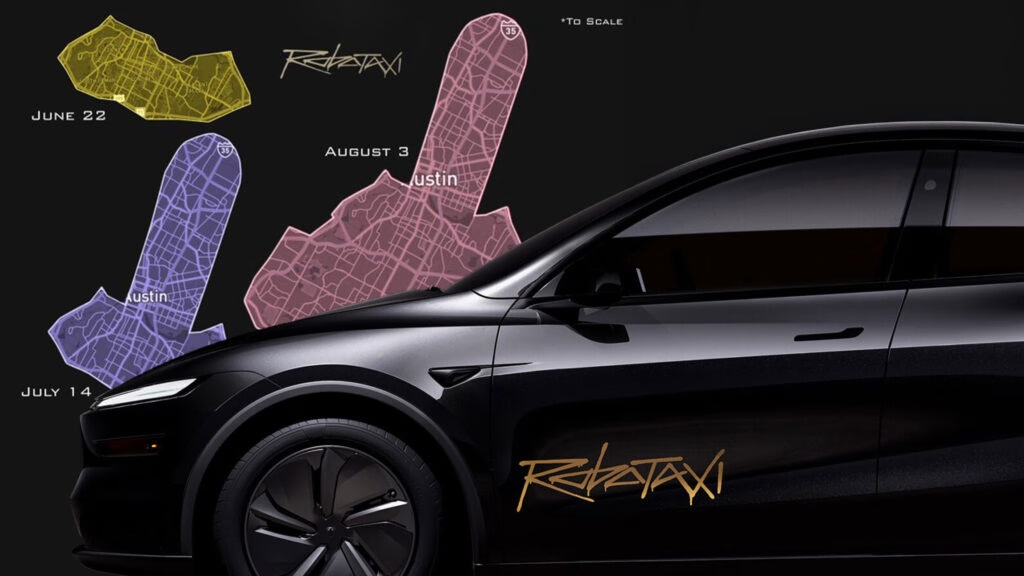How does Tesla’s robotaxi expansion in Austin stack up against Waymo’s?
Tesla just made a bold move in Austin, Texas, expanding its robotaxi geofence to a whopping 171 square miles. That’s nearly double the 90 square miles currently covered by Waymo, its main competitor in the city. This isn’t just a numbers game—it’s a sign of how fiercely these two tech giants are battling for the future of autonomous rides in one of America’s fastest-growing cities.
For context, Waymo kicked off its Austin service in March with a modest 37-square-mile map. Tesla entered the ring in July, starting with just 20 square miles before quickly bumping up to 42. Not to be outdone, Waymo doubled its own coverage to 90 square miles just days later. Now, with Tesla’s latest leap, the competitive heat is on.
What areas does the new Tesla geofence actually cover?
Tesla’s expanded territory isn’t just a random sprawl. The new map includes downtown Austin, several key suburbs, and even stretches out to the Tesla Gigafactory Texas. That means more potential riders, more destinations, and a bigger playground for testing real-world robotaxi operations. For anyone living or working near the Gigafactory, this could be a game changer—at least on paper.
But here’s the catch: just because the map is bigger doesn’t mean the service is everywhere you want it, whenever you want it.
Are there enough Tesla robotaxis to meet demand?
Here’s where things get a little sticky. Despite the huge coverage area, Tesla’s actual fleet in Austin is tiny—reportedly fewer than two dozen vehicles, with some insiders suggesting it could be as low as ten. That’s not a lot of cars to cover 171 square miles. The result? Potentially longer wait times and less reliability, especially during peak hours or in far-flung suburbs.
Online chatter from early users echoes this concern. Some say the service feels more like a lottery than a taxi—sometimes you get lucky, sometimes you’re left hanging. It’s a classic case of over-promising and under-delivering, at least for now.
Who can actually use Tesla’s robotaxi service right now?
Don’t expect to hail a Tesla robotaxi just yet, even if you’re in the coverage zone. The service is still in private beta, meaning only approved testers can ride. And every trip comes with a human safety attendant in the driver’s seat—so we’re not at the fully driverless future just yet.
Waymo, on the other hand, has been running public rides in Austin since March, though its coverage is smaller. Both companies are moving cautiously, balancing innovation with safety and regulatory requirements.
How does this rivalry benefit Austin’s residents?
While the back-and-forth between Tesla and Waymo might seem like tech theater, it’s actually great news for Austin. Competition pushes both companies to innovate faster, expand coverage, and (eventually) improve reliability and affordability. According to a 2024 report from the National Renewable Energy Laboratory, cities with multiple autonomous vehicle operators see faster improvements in service quality and accessibility compared to markets with only one provider.
Plus, as these companies iron out the kinks—like scaling up their fleets and transitioning to fully driverless service—Austin stands to become a national testbed for the future of urban mobility. That means more options, better prices, and, hopefully, fewer cars clogging up the roads.
What’s next for robotaxi services in Austin?
Expect the rivalry to keep escalating. Both Tesla and Waymo have deep pockets and a lot to prove. Tesla’s next big hurdle is scaling up its fleet to match its ambitious map. Waymo, meanwhile, will need to expand its own coverage and continue refining its tech to stay competitive.
For Austin residents, the best move is to stay tuned—and, if you get the chance, try out both services when they become available. The big takeaway? The robotaxi revolution isn’t about perfection—it’s about smarter adjustments. Start with one change this week, and you’ll likely spot the difference by month’s end.

